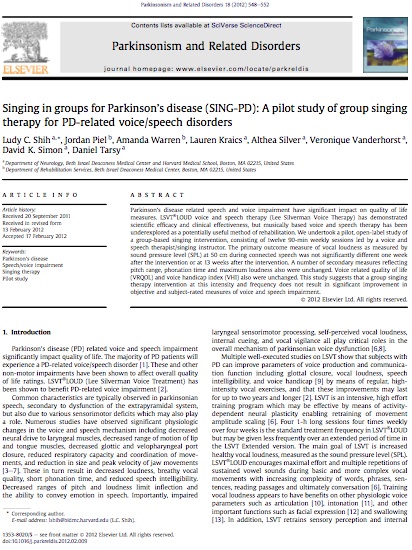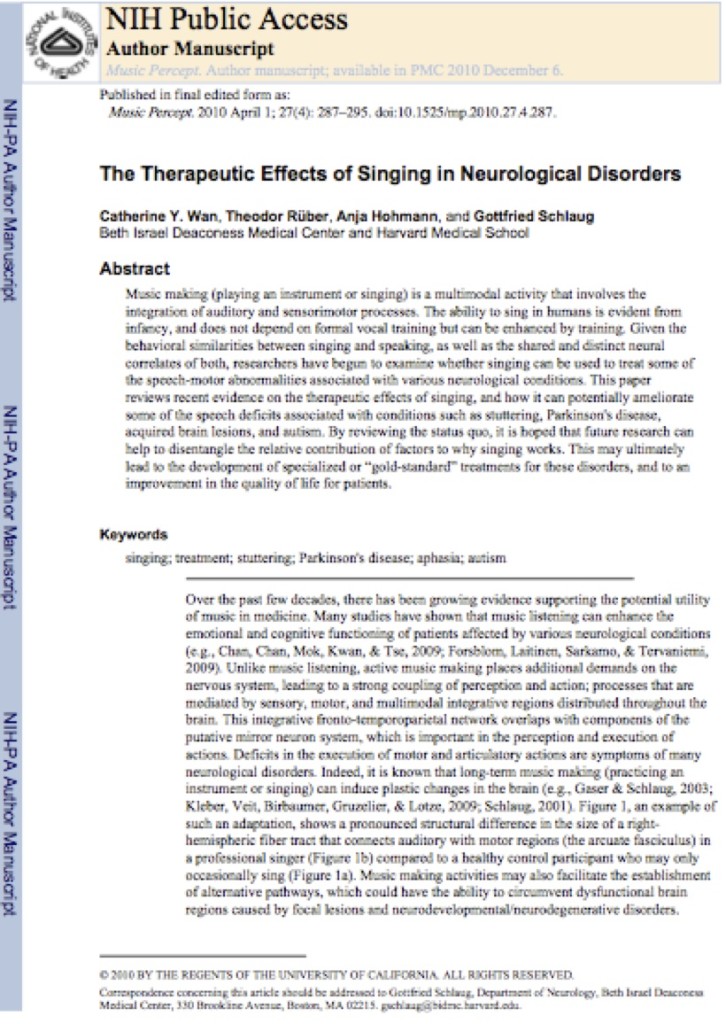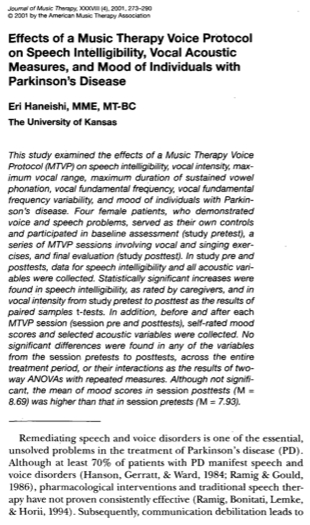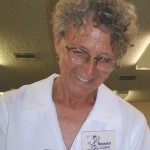Tremble Clefs is a nation-wide program for people with Parkinson’s and their partners. The Tremble Clefs Program establishes singing groups in which individuals share in a joyful activity with therapeutic results and work toward a common goal. Participation in a Tremble Clefs singing program can help address voice and communications problems through breathing, stretching and posture activities, vocal exercise, rhythm and movement, and a strong social support system.
Demos
Program Creator
Karen Hesley 619-445-8623 khesley@hotmail.com
Karen is a speech-language pathologist with master’s degrees in linguistics and communication disorders. She is an experienced clinician in school-based, private practice and hospital settings. While working at Scottsdale Memorial Hospital in Arizona, she provided Parkinson’s patients with the Lee Silverman Voice Treatment. In 1994, she established the Tremble Clefs Program and directed that group until moving to San Diego in 2001. Her current Tremble Clefs group in San Diego has been on-going for 12 years and enjoys the support of the Parkinson’s Association of San Diego. She hopes to continue her dedication to the expansion of this program.
Existing groups: http://trembleclefs.com/trembleclef_groups.htm
Phoenix, Arizona
San Diego, California
Newport Beach, California
Laguna Hilla, California
Walnut Creek, California
Start your own group: http://trembleclefs.com/starting_a_group.htm
~~~~~~~~~~~~~~~~~~~~~~~~~~~~~~~~~~~~~~~~~~~~~~~~~~~~~~~~~~~~~~~~~~~~~~~~~~~~~~~~~~~~~~~~~~~~~~~~~~~~~~~~~~
What are common Parkinson-related voice and speech changes?
Monotone, reduced volume, imprecise articulation, tremor, stuttering
What’s the role of a Speech-Language Pathologist for Parkinson’s-related voice and speech changes?
Establish baseline function of communication and swallowing ability. This may include imaging your throat with an endoscope and/or Xray. The most common recommendation to preserve communication ability or address deterioration is participation in Lee Silverman Voice Treatment (LSVT®). To address swallowing difficulty, strategies to consume meals and beverages safely will be administered in conjunction with mouth and throat strengthening exercises, which may also include neuromuscular electrical stimulation (VitalStim therapy).
What are the LSVT® exercises?
45-60 minute sessions 4x/week for 4 weeks1) “Ahhh” as loud as you can for as long as you can, 15x
2) “Ahhh” from lowest to highest pitch, 15x
3) “Ahhh” from highest to lowest pitch, 15x
4) 10 self-selected sentences (“How are you?”, “What would you like for dinner?”, “I love you.”) at >75dB volume, 5 reps per sentence
5) reading/talking aloud at >75dB for 15+min. Week#1 = words & phrases, Week#2 = sentences, Week#3 = paragraphs, Week#4 = conversation.
6) “off the cuff” measurement. clinician assesses if carryover of loud voice is achieved without cueing.
Will singing prevent voice and speech changes?
Singing is an excellent task to maintain vocal cord tone and mobility; however, the research does not support that the common Parkinson’s speech characteristics such as breathiness and monotone improve unless under the guidance of a speech-language pathologist who facilitates self-calibration of these qualities. Parkinson’s affects the ability to self-monitor and calibrate appropriate speaking effort. This can also be observed with gross motor movements as in the shuffling characteristic of walking.
What singing exercises can I do to work within the guidelines of LSVT® research?
1) Sing loudly (80-90dB)
2) Stretch the parameters of your singing range; always strive for lower and higher notes.
3) Select vocal music slightly beyond current abilities as a challenge to expand tone, range and singing register shifts.
4) Exaggerate articulation (“diction”) to involve exercise of lip, tongue and palate muscles.
5) Integrate staccato into vocal warm-ups to improve vocal agility. This facilitates quick opening and closing of the vocal cords in addition to breath coordination.
6) Match speaking quality to singing quality to seek functional habituation of greater speaking effort. Try singing a phrase, then immediately speaking it loudly with a lot of inflection.
7) Record yourself singing and speaking to improve awareness and calibration of appropriate vocal effort. Consider volume, tone clarity and pitch inflection.
How exactly would LSVT® modifications look to suit Tremble Clefs?
1) “Ahhh” as loud as you can for as long as you can, 15x
MODIFICATION: chromatically alter pitch, use different vowels, attempt to stabilize any tremors
2) “Ahhh” from lowest to highest pitch, 15x
MODIFICATION: staccato vocal runs (1-2-3-4-5-5-5………..(hold top note as long as you can) / do-re-mi-fa-sol-sol-sol………..(hold top note as long as you can))
3) “Ahhh” from highest to lowest pitch, 15x
MODIFICATION: staccato vocal runs (5-4-3-2-1-1-1………..(hold bottom note as long as you can) / sol-fa-mi-re-do-do-do………..(hold bottom note as long as you can))
4) 10 self-selected sentences (“How are you?”, “What would you like for dinner?”, “I love you.”) at >75dB volume, 5 reps per sentence
MODIFICATION: Singing small excerpts from repertoire with specific attention to loudness, then speak the same phrase. Work on matching same intensity so singing is used functionally to improve speaking ability.
5) reading/talking aloud at >75dB for 15+min. Week#1 = words & phrases, Week#2 = sentences, Week#3 = paragraphs, Week#4 = conversation.
MODIFICATION: Read aloud words of multiple songs to work on calibration and habituation. See how long you can sustain loud, resonant voice.
6) “off the cuff” measurement. clinician assesses if carryover of loud voice is achieved without cueing.
MODIFICATION: Ask your partner/spouse, a family member or a friend if there is any noticeable change in the way you talk, specifically regarding vocal loudness.
Should I just try LSVT® exercises on my own?
No. LSVT® must be administered by a Speech-Language Pathologist with specialty certification. You can locate a clinician here: http://www.lsvtglobal.com/clinicians. The purpose for seeking this guidance is that the crux of Parksinon’s related speech difficulty is not with lack of ability to speak louder and with inflection, rather, there is inherent difficulty perceiving there is a problem. Most individuals with Parkinson’s are quite surprised during the audio biofeedback component of the therapy when they hear a recording of their own voice. They typically report feeling as if they are using adequate volume; however, they are soft-spoken and monotone.
Is there any research on music and singing therapy for Parkinson’s disease?
Yes. Here are several articles below you may reference. They are each hyperlinks to the full publications.
 |
 |
 |
 |
